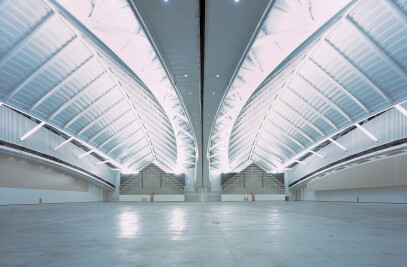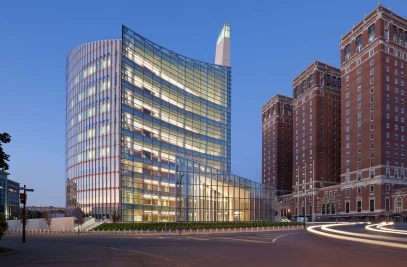The tower's rational form contains office, auditorium, and tenant amenity space, including the Doosan History Museum and a café that opens up to the landscaped roof terrace. The stacked, interconnected masses create a grand portal which becomes an identifiable visual marker from the adjacent Gyeongbu Expressway. When approached from the city, the portal serves as the main entry point to the building, leading tenants and visitors underneath the skybridge.Glass facades allow plentiful daylight into the interior space while limiting solar gain through vertical and horizontal exterior shading devices. A series of regular, repeating fins mitigate glare without obscuring views of the surrounding cityscape. Crafted in granite and with a chiseled finish at their edges, the fins serve as an aesthetic transition between the rocky landscape and the building’s glass façade. Their grain follows the orientation of the building masses, enhancing the sense of directionality and movement of the traffic on the expressway.

Inside, the building contains a variety of office space, the most notable of which is located in the skybridge. Four extra-large floor plates include open workspace and casual meeting areas all connected by a four-story, sky lit atrium with a green feature wall. The skybridge’s open floorplan, with flexible layouts to foster innovation through collaboration, runs parallel to the expressway providing panoramic views to the dynamic context.




































